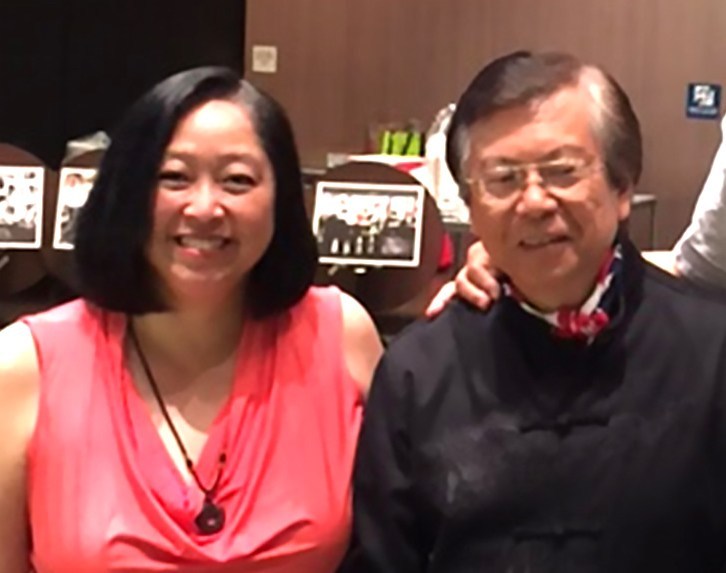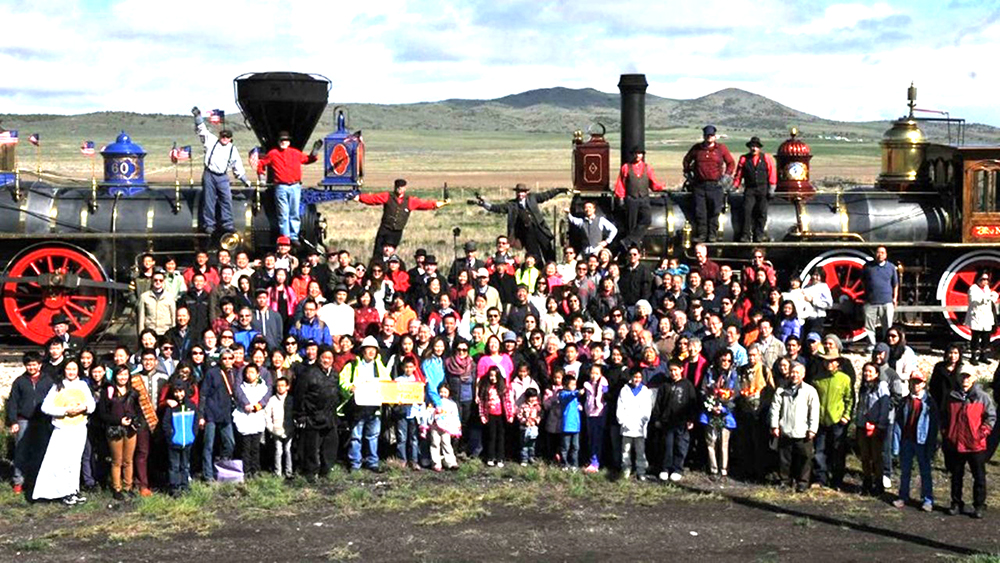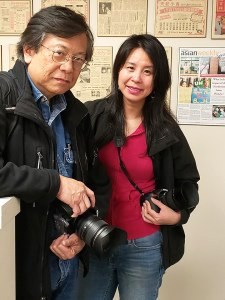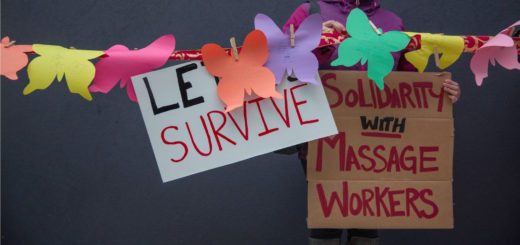Remembering Corky Lee — the unofficial Asian American photographer laureate
The following also appeared in the Northwest Asian Weekly on February 4, 2021.

By Connie So
On Jan. 27, the unofficial “Asian American photographer laureate,” Corky Lee, passed away from complications of COVID-19 at the age of 73. For over 50 years, Corky dedicated himself to capturing the social and political lives of Asian and Pacific Islander Americans (APIA) on camera.

His photographic activism began when he took a photojournalism class as a junior high student and saw the 1869 “Champagne Photo” taken at Promontory Point, Utah. As noted in his profile at New York University’s Asian/Pacific/American Institute, this photograph “commemorated the completion of the transcontinental railroad and showed workers posing with two trains, one from the Central Pacific and one from the Union Pacific. But something was wrong with this picture. No Chinese workers.” Realizing the injustice of their exclusion, Corky dedicated himself from that point forward to making APIAs visible. Many of Corky’s photographs are of everyday APIA communities like Chinatowns, to preserve history and restore pride.

The son of Chinese immigrants, Corky became the first in his family to graduate from college (City College of New York). He then followed his passion to become a self-taught freelance photographer. His photographs have appeared in The New York Times, Time Magazine, the Associated Press, and various Asian American media outlets. Among his earliest well-known photos are those of the protests against the Vietnam War and police brutality, including one after a Chinese American was beaten by New York police in 1976. Corky also documented the national protest against the no-jail-sentence that the murderers of Vincent Chin received in 1982, an event that arguably led to the pan-Asian movement. In 2014, Corky famously recreated the “Champagne Photo,” but this time, with the Chinese American descendants of the original railroad workers as the focus.
While I did not know Corky well, I had the pleasure of working with him in 2017. In February of that year, he and I were part of a group of concerned APIAs who wanted to ensure that the Chinese, and other BIPOCs, will be honored on the anniversary of Golden Spike Day (May 10, 1869), particularly because Chinese contributions to the building of the transcontinental railroad were diminished and ignored during the 100th anniversary celebration. Many of us wanted to generate excitement and express righteous indignation about having to wait 50 years for proper recognition. We collectively acknowledged that another lecture might be boring and that we would probably be “preaching to the choir.”

Corky offered that if any group wanted, he would help generate enthusiasm for the 150th anniversary of Golden Spike Day by exhibiting for free his photographs showcasing the APIA experience. As an academic and an officer in OCA Asian Pacific Advocates of Greater Seattle, I immediately told Corky that I would be willing to help organize such an event in Seattle, albeit a low-cost event since there was little time to fundraise or apply for grants. Corky said he was serious about helping and volunteered to travel to Seattle for free. In two months, working collaboratively with the Department of American Ethnic Studies at the University of Washington, Seattle Public Library, Northwest Asian Weekly, and the Chinese American Citizens Alliance, we debuted a pop-up exhibit, “Chinese Americans: Inclusion/Exclusion,” on Memorial Day, during APIA Heritage Month.
We had a great turnout and people enjoyed meeting Corky and viewing his work. But the most important part of this story is not the actual exhibit nor the event. Even though Corky said not to pay him, I planned to give him an honorarium in a lisee (a red envelope representing luck/blessings). But he refused to accept it because he wanted the money to go to students instead. He told me he had money coming and would be fine. We went back and forth and joked that we were acting like our parents fighting to pay a restaurant bill. By the end, I prevailed. But not entirely. Corky then autographed and donated his 2014 photograph of Chinese Americans at Promontory Point, Utah, and told me to use it to raise funds to sponsor OCA-GS interns. That was the only way he would accept the lisee. The photo was already carefully wrapped and prepped for framing, so he had obviously planned to give it to me as a gift for OCA-GS. I was truly touched by his selflessness and generosity.
Corky is a legendary photographer and well-known for capturing the APIA experience. But the reason his photographs resonated so much with those who saw them was the way they also reflected his “heart”—his love, generosity, and concern for others, especially those in the APIA community. He, in fact, stayed true to his life’s mission to the very end, photographing recent hate crimes against APIAs over the past year then, once he was hospitalized, the abundance of flowers he received from friends and community members who wanted to honor our unofficial APIA photographer laureate. Rest in peace, Corky Lee.







